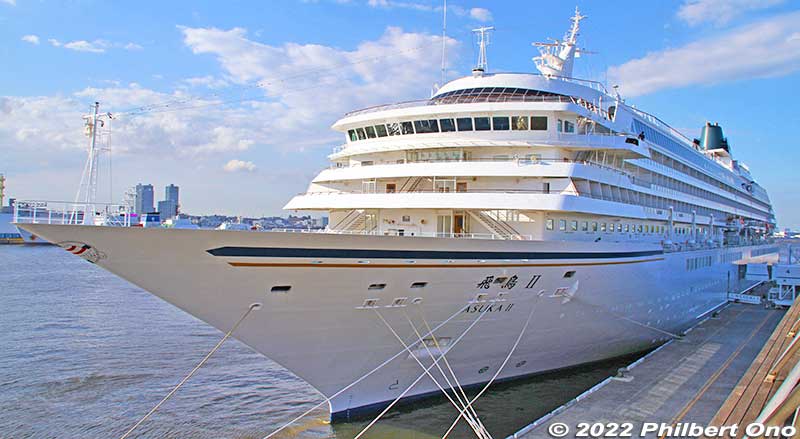
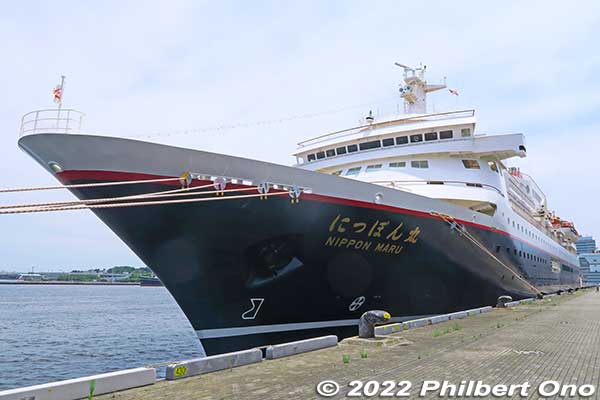

Overview of Japan’s luxury cruise ships in 2022
by Philbert Ono, Updated: Sept. 25, 2023
On this page:
- Cruise ship comparison
- Japanese cruise ship advantages
- COVID-19 protocols
- Basic cruise rules
- Safety record
- FAQ
- Asuka II
- Pacific Venus
- Nippon Maru
In 2022, Japan’s three major cruise ships were (largest to smallest) Asuka II, Pacific Venus*, and Nippon Maru homeported in Yokohama, Osaka, and Tokyo, respectively.
They are operated by NYK Cruises, Japan Cruise Line*, and Mitsui O.S.K. Passenger Lines, respectively. All three are medium-size cruise ships with a maximum capacity of several hundred passengers.
[*Update: Sadly, Pacific Venus stopped sailing after its final voyage ended on Jan. 4, 2023. Ship owner Japan Cruise Line announced on Nov. 1, 2022 that it will pull out of the cruise ship business entirely after the Pacific Venus completes its New Year’s 2023 cruise to Okinawa and Amami Oshima. As of Jan. 2023, still no word on the fate of the ship.]
In spring 2025, a new cruise ship to be named Asuka III ordered by NYK Cruises will arrive in Yokohama and join (not replace) Asuka II. Not to be upstaged, Mitsui O.S.K. announced plans to build two new cruise ships with the first ship to be delivered in 2027. Still unknown if the current and aging Nippon Maru will be replaced by the new ship(s). Mitsui also expressed its desire to cater to international passengers in the future.
Cruise ships are defined as passenger ships for leisure or vacation purposes instead of transportation like on ferries. They are floating resort hotels with private cabins for overnight and longer cruises. They have dining rooms, restaurants, cafes, lounges, amusement facilities, recreational activities, and live entertainment.
They mainly go on “closed loop” cruises, meaning that they start and end at the same port. Sometimes they go on one-way cruises such as from Hakodate to Yokohama.
Cruise ships are not to be confused with ocean liners which were mainly for regularly scheduled transportation across oceans. Ocean liners like Hikawa Maru, Argentina Maru, and SS President Cleveland are long gone from Japan due to air travel from the 1960s.
The three Japanese cruise lines operating as of 2022 started their cruise ship operations in 1989–1990. The year 1989 is hailed as Year 1 of luxury cruising in Japan (クルーズ元年) besides being Year 1 of the Heisei Period.
It was the year when Mitsui O.S.K. Passenger Line started operating its new cruise ship, the Fuji Maru. It was Japan’s first and largest cruise ship to be built in Japan. (Sold off in 2013.)
In 1990, Japan Cruise Line started operating the Orient Venus cruise ship (later replaced by Pacific Venus). Mitsui O.S.K. Passenger Line also launched its third-generation and current Nippon Maru in the same year.
After a 30-year absence since the retirement of the Hikawa Maru in 1960, NYK Line reentered the passenger ship business by establishing NYK Cruises Co., Ltd. in 1990. It started operating the first Asuka cruise ship in 1991 (later replaced by Asuka II). Japan’s nascent cruise industry thus started with these four ships.
Japanese Cruise Ship Comparison and Specifications
| Ship | Asuka II | Nippon Maru | Pacific Venus (Defunct from Jan. 4, 2023) | Asuka III |
|---|---|---|---|---|
| Built | 1989 by Mitsubishi Heavy Industries, Nagasaki, Japan | 1990 by Mitsubishi Heavy Industries, Kobe, Japan | 1998 by Ishikawajima Heavy Industries (IHI Corporation), Tokyo | 2025 by Meyer Werft, Germany |
| Capacity* | 872 pax, 490 crew | 449 pax, 230 crew | 620 pax, 204 crew | 744 pax, 470 crew |
| Passenger cabins* | 436 (60% w/balcony) | 199 | 238 | 385 (all with balcony) |
| Wheelchair cabins | 4 twin-bed cabins | 2 twin-bed cabins | 2 “Deluxe Rooms” | ? |
| Length / Width | 241 m / 29.6 m | 166.65 m / 24 m | 183.4 m / 25 m | 228.9 m / 29.8 m |
| Draft | 7.8 m | 6.6 m | 6.5 m | 6.7 m |
| Decks | 8 | 7 | 12 | ? |
| Gross tonnage | 50,444 | 22,472 | 26,518 | 51,950 |
| Home port | Yokohama | Tokyo | Osaka | Yokohama |
| Operator | NYK Cruises (Asuka Cruise) | Mitsui O.S.K. Passenger Lines (MOPAS) | Japan Cruise Line (Venus Cruise) | NYK Cruises (Asuka Cruise) |
| Parent company | NYK Line (Nippon Yusen) | Mitsui O.S.K. Lines (MOL) | SHK Line Group | NYK Line (Nippon Yusen) |
| Refurbished | 2020 | 2010, 2020 | 2008 | — |
| Remarks | Originally Crystal Harmony for Crystal Cruises in the U.S. In service as Asuka II from 2006. | Not to be confused with the Nippon Maru sailing ship. | Retired on Jan. 4, 2023. Parent company pulled out of the cruise ship business. | Newbuild ship to join Asuka II. |
| Website | asukacruise.co.jp | nipponmaru.jp | venus-cruise.co.jp | asukaluxury.asukacruise.co.jp |
| Current location | Map | Map | Map | Papenburg, Germany |
Asuka II is the biggest ship and originally built for Crystal Cruises in the U.S. as the famous Crystal Harmony. Great for people who like big ships and bigger spaces.
Nippon Maru has a reputation for exquisite, fine dining. It was the smallest Japanese cruise ship. It might be replaced by a new ship(s) which parent Mitsui O.S.K. Lines (MOL) announced on Nov. 25, 2022. It has decided to build two new cruise ships at 35,000 gross tons each and maximum capacity of 600 passengers (double occupancy) and 320 crew. First new ship is to be completed in 2027.
Pacific Venus was convenient for people in western Japan (Osaka/Kyoto/Kobe) since it was homeported in Osaka and often cruised in that region. However, its parent company pulled out of the cruise business after the last cruise ended on Jan. 4, 2023.
There’s hardly any other strong argument to choose one Japanese cruise ship over the others. It will depend on your personal preferences, nearest departure port, and desired cruise itinerary.
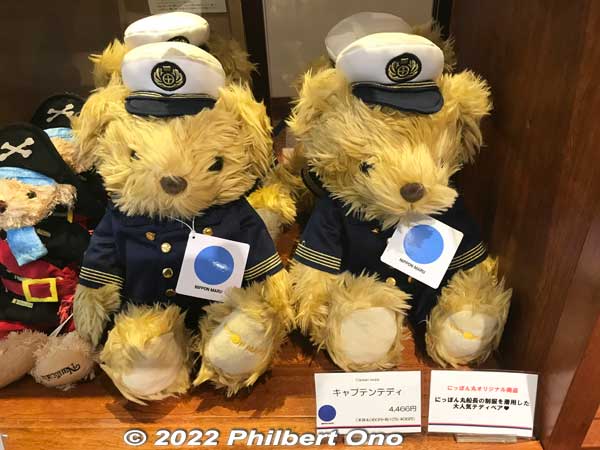
All three Japanese cruise ships have similar facilities, amenities, and services. You can see how uniform or standardized they are if you look at their official websites (and can read Japanese). If one ship offers something unique, the other ships tend to follow suit and offer it too.
For example, large communal baths with ocean views, exclusive dining room for upper-class passengers, blanket or towel sculptures/animals on the bed, and gift shops selling teddy bears in a captain’s uniform. They all have it.
Japanese cruise fares are usually all-inclusive, covering accommodations, marine transportation, main meals, snacks, onboard activities, and entertainment. Alcoholic drinks, personal services like beauty salons and spa treatments, and most shore excursions cost extra.
Compared to most international cruise ships, Japanese cruise fares are more expensive starting from ¥40,000 to ¥60,000 per night depending on the length of the cruise. Overbooking on a Japanese cruise ship is unheard of. (See “How much does a cruise in Japan cost?” FAQ below.)
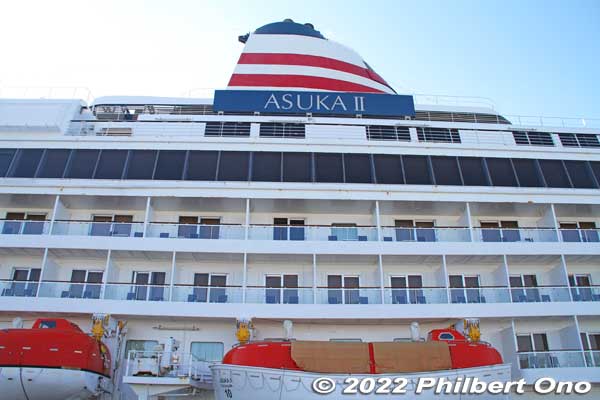
Passenger cabins are available in multiple grades and price points ranging from spacious suites to standard-size twin/triple-bed cabins. Passenger cabins in all three Japanese cruise ships all face the ocean. So all cabins have a window/porthole or balcony. There are no windowless or inside/interior cabins. This might be one reason why their cruise fares are more expensive than international cruise ships. (Not good for people who prefer the lower cost of windowless cabins though.) About 60 percent of Asuka II’s cabins have a balcony, many more than the other two ships. Looks more like a floating hotel.
The cabins have the same standard amenities as in a nice hotel. Even the cheapest cabins have a small sofa, desk, TV, refrigerator, electric tea kettle with tea powder/bags, air purifier, safe box, closet with hangers, shower (and bathtub in better cabins), toilet with washlet/bidet, sink, towels, toothbrush, soap, shampoo/conditioner, razor, hairbrush, shower cap, room slippers, hair dryer, tissues, cabin phone, and individual bed curtains. Suites will have more things like bathrobes, free drinks, and a butler. Asuka II’s cabins all have a bathtub. The other two ships have only a shower in the lesser cabins.
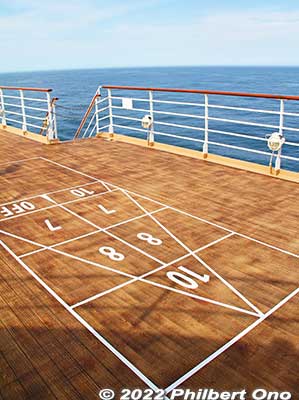
Ship facilities include multiple dining rooms, bars and lounges, cafe, casino (without using real money since it’s illegal in Japan), sports deck for outdoor activities such as shuffleboard, small pool, concert/event hall, movie theater, dance hall, library, front desk, tour desk, concierge, gift shops, meeting room, card/game room, fitness gym, nail salon, beauty salon, treatment spa, official photographer taking and selling photos, smoker’s lounge, laundromat, medical clinic with a doctor and nurse, PCR testing facility, and isolation rooms (with negative air pressure) for anyone with an infectious disease. The karaoke and card rooms might be closed as an anti-COVID-19 measure.
Onboard activities include shuffleboard, ring tossing (quoits), bingo with prizes, cultural/craft lessons, yoga, lectures, live music, and evening entertainment on stage. Onboard concerts are often headlined by a well-known Japanese singer like Ishikawa Sayuri, Ohta Hiromi, Hajime Chitose, Natsukawa Rimi, or even Kayama Yuzo.
Passengers celebrating a birthday, wedding anniversary, honeymoon, etc., receive a complimentary gift or cake and a photo taken of them by a staff photographer.
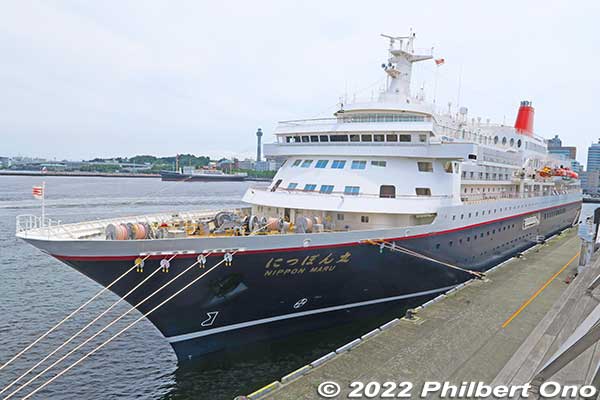
Cruise clubs (loyalty programs) are great for repeaters to receive cruise fare discounts. Passengers can join the cruise club for free while on board. Club members can receive discounts for their next cruise on the same ship. The amount of the discount depends on how many nights you have cruised so far. The more nights, the bigger the discount.
In the case of Pacific Venus, going on an overnight cruise qualified you to receive a ¥3,000 discount on your next Pacific Venus cruise. If you were on a seven-night or longer cruise, you got a ¥25,000 discount for the next cruise. Other discounts may be available such as for seniors (age 60 and above) and families.
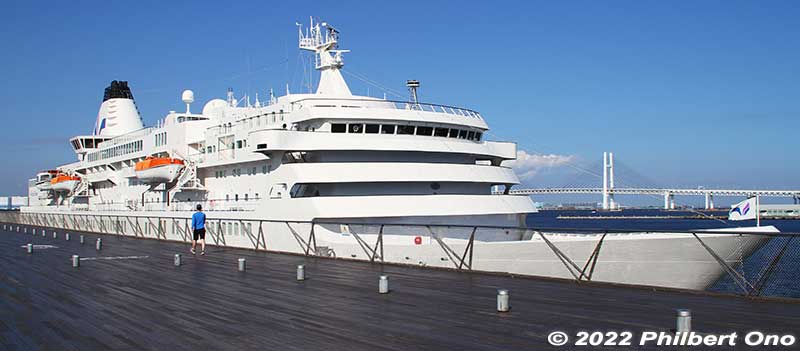
Although the Japanese ships are business rivals, they are also comrades in a niche industry. When necessary, they cooperate with each other and even encourage each other. For example, when two of the ships are at the same dock, a joint PR event might be held for the public.
Or, when one ship leaves, the ship remaining at port blows its horn to say “Bon voyage!” (Itterasshai!) and the departing ship then blows its horn in return to say “Thank you!” (Ittekimasu!).
In autumn 2021 when the ships finally restarted (for the second or third time) cruising, the crew on Asuka II gave lots of cheers as they watched Nippon Maru at Yokohama Port leaving the dock to restart cruising.
And back in February 2020 when the Diamond Princess was quarantined in Yokohama, Pacific Venus passed by on its way back to the port and blew her horn to show its support. Passengers also held up a large sign saying “Gambare Diamond Princess!” (Hang in there!) Diamond Princess blew her horn in return.
👍 Advantages of Japanese cruise ships
Compared to international cruise ships, Japanese cruise ships have the following advantages in the eyes of Japanese passengers:
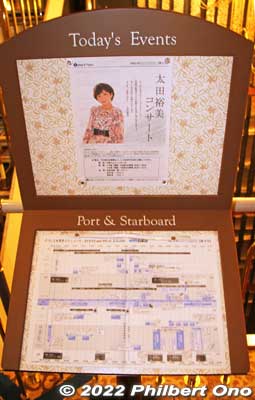
・Everything is in Japanese.
Ship-wide announcements, onboard daily newsletters (activity schedule), notices, dining room menus, shore excursions, laundromat machines, brochures, official websites, cruise reservations, and official videos are all in Japanese only. Only the ship’s floor plan and in-cabin information might include some English. Don’t worry if you can’t speak or read Japanese though. The ship would have English-speaking staff.
Being on a Japanese cruise ship for a world cruise may make you feel less homesick for Japan. The ship is like a piece of Japan traveling with you overseas. A Japanese home away from home in Japan. Before the pandemic, all Japanese cruise ships offered international and world cruises in addition to cruises within Japan.
・Top-notch Japanese-style customer service.
The Japanese-style omotenashi service is top-notch, treating passengers like royalty with lots of polite language. It makes you feel important because well, “Okyakusama wa kamisama.” (Customers are to be treated like gods.)
Japanese cruise ships also employ many non-Japanese crew members (especially Filipino) who are also well trained, courteous, and professional. They work mainly as waiters/waitresses, and housekeeping maids and some can speak basic Japanese.
・Japanese food is the best.
Japanese cuisine is another reason to cruise on a Japanese cruise ship. The food is exquisite and excellent. There’s sushi (raw fish), donburi, yakisoba noodles, Japanese confections, etc. For New Year’s, they serve traditional New Year’s food such as osechi and mochi.
Lots of food for each full-course meal. Lots of snacks and treats in-between too. The food is often made with ingredients from the ports of call. Shizuoka tea, Matsuzaka wagyu beef, Hokkaido melons, etc. If you’re watching your weight though, you might need to control your eating.
・No tipping required.
No need to tip the waiter/waitress, housekeeper maids, bartender, etc. All gratuities are included in the cruise fare.
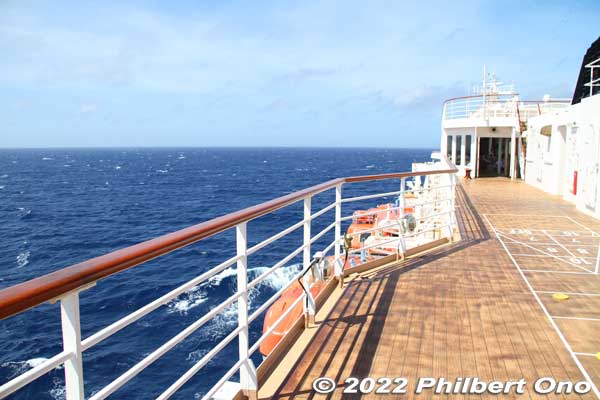
・Luxury-class ships.
International cruise ships/lines are commonly categorized as “Mainstream” (mass market or budget), “Premium” (middle class), or “Luxury” (most expensive). Japan has too few cruise ships to have such categories, but they would all belong to the top-end “Luxury” category, judging by their cruise fares. (See “How much does a cruise in Japan cost?” FAQ below.)
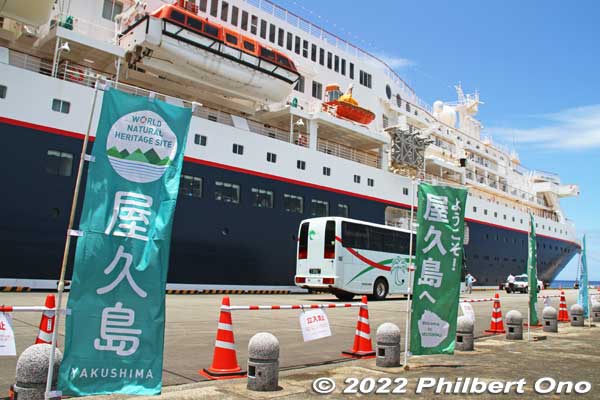
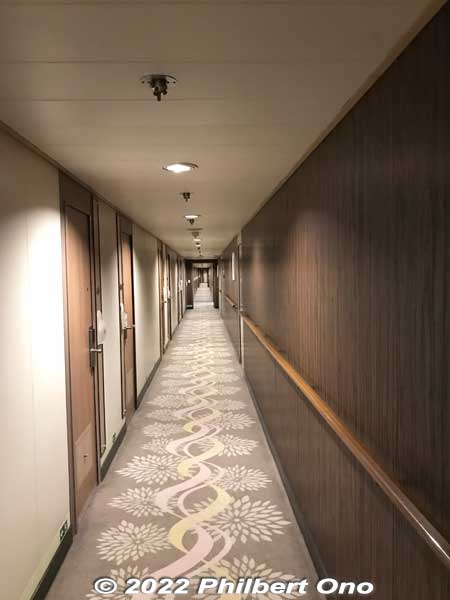
・Being smaller, Japanese cruise ships can dock at more Japanese ports.
Smaller cruise ships have their advantages in Japan. Pacific Venus and Nippon Maru can dock at smaller and shallower Japanese ports like Yakushima island in Kagoshima Prefecture.
The larger Asuka II and mega-ships would require time-consuming tender boats (通船) shuttling passengers between the ship anchored offshore and the dock onshore. Tender boats are vulnerable to ocean and weather conditions which may prevent passengers from going ashore. Mega-ships might skip smaller ports.
Also, elderly and wheelchair passengers have an easier time getting around on smaller cruise ships. Smaller ships also release less emissions, and fewer passengers means less sewage (blackwater and gray water).
・Shorter cruises are possible.
Unlike international cruise ships, Japanese cruise ships need not include a foreign port in the cruise itinerary. Their cruises can therefore be shorter, as short as one to three nights which is what most Japanese cruisers prefer.
・More flexible and timely cruise itineraries in Japan.
Homeported in Japan, Japanese cruise ships can schedule Japan cruises more easily to see cherry blossoms, major festivals, fireworks, autumn leaves, etc. Summer festivals in the Tohoku Region are especially popular.
・Less crowded and more laid back.
Unlike mega-ships, Japanese cruise ships are much smaller and don’t have water slides, go-kart racetracks, roller coasters, zip lines, and other amusement bells and whistles. But they are less crowded, less dense, less noisy, and more personable. No long lines for anything on board. They offer a more laid back, relaxing, and quiet time at sea.
・Fewer passengers and crew, less chance of COVID-19 cases.
Bigger ships with more people aboard have more chances of seeing COVID-19 cases. With fewer passengers and crew, Japanese cruise ships more often cruise with zero COVID-19 cases.
😷 COVID-19 safety protocols on Japanese cruise ships (as of mid-2022)
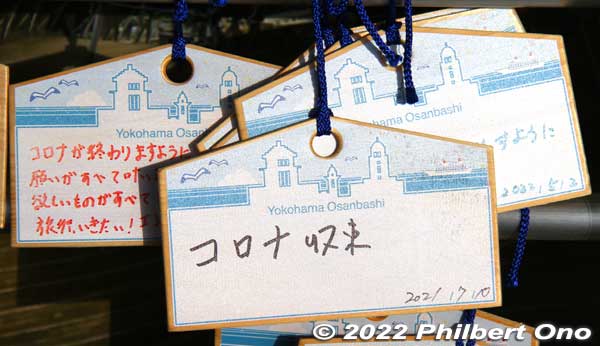
Although COVID-19 safety protocols are being eased on cruise ships overseas, Japanese cruise ships as of September 2022 still strictly follow COVID-19 safety protocols in accordance with guidelines from the Japanese government’s Ministry of Land, Infrastructure, Transport, and Tourism and the Japan Oceangoing Passenger Ship Association (JOPA).
COVID-19 safety guidelines on Japanese cruise ships were first issued on September 18, 2020 by the Japan Oceangoing Passenger Ship Association (JOPA). They have since been revised seven times with the 7th version announced on July 31, 2022. (The 8th version was issued in Nov. 2022.)
COVID-19 safety measures on Japanese cruise ships include the following as of mid-2022. Note that they are subject to change as Japan changes its COVID-19 policies.
- The number of passengers are limited to 50 percent to 65 percent of the cruise ship’s maximum capacity.
- All passengers and new crew members are required to be PCR-tested (saliva sample) three days before the cruise and again on the departure date before boarding. A positive test will disallow the person to board.
- Before boarding, all passengers must complete a health survey mainly about their health condition during the past two weeks.
- Within two weeks before the cruise, any passenger or crew member who has been abroad or who had a fever, fatigue, difficulty breathing, loss of smell/taste, or was a close contact with an infected person are not allowed to board.
- It is preferred that you are fully vaccinated. Otherwise, you may need to show proof of a negative PCR test.
- Any passengers and crew with a temperature of 37.5˚C or higher are not allowed to board.
- People with serious underlying health conditions must consult their doctor for approval on going on a cruise. People with serious respiratory conditions requiring an oxygen tank, etc., are not allowed to board.
- All passengers and crew members are required to wear a mask outside their cabins. Crew members who regularly serve or talk to passengers must also wear a face shield.
- No buffet for main meals. Meals are instead served individually by waiters/waitresses. Self-served food may be permitted only if the food is covered, tongs are used, etc.
*Based on revised guidelines as of late July 2022, buffets may be restarted with adequate safety measures, like covering the food. - Air conditioning and ventilation must provide adequate air flow and filtering, and the CO2 level is not to exceed 1000 ppm. Humidity is to be at least 40%.
- The ship’s captain might no longer mingle with guests.
- Passengers are no longer allowed to tour the ship’s bridge.
- The ship’s medical clinic includes COVID-19 testing facilities, doctor, nurse, and isolation cabins (with negative pressure) for any infected persons.
- Crew members are PCR-tested for COVID-19 around once a week or more often.
- The ship has PCR testing kits to test suspected people.
- The ship has a number of isolation rooms with negative air pressure to isolate infected persons.
- When crew members go ashore on their free time, they are to avoid crowds as much as possible and return to the ship within a few hours.
- Passengers are thermal scanned for their body temperature and required to disinfect their hands at the entrance of dining rooms, etc.
- When passengers sit for meals on the ship, their seat is recorded to help contact tracing if necessary.
- Plexiglass is installed on dining room tables, at the front desk, etc.
- Whenever leaving and boarding the ship, the person’s body temperature is taken.
- Stairway handrails, elevator buttons, and other things people touch are disinfected regularly.
- Ship’s ventilation system disinfects, filters, and changes the air frequently.
- For communal baths, your cabin TV has a channel indicating the current crowd level.
- For shore excursions, tour buses are not filled to capacity to allow social distancing. People use hand sanitizer whenever boarding the tour bus.
- Japan’s COCOA contact tracing app was being recommended these past two years. However, this app might soon be abolished.
Essential COVID-19 Japanese Vocabulary (Click to open)
Compiled by Philbert Ono, updated: Sept. 7, 2022
novel coronavirus – shingata-korona-uirusu 新型コロナウイルス
pandemic – pandemic パンデミック
infection/infect (virus) – kansen 感染
infected person(s) – kansen-sha 感染者
close contact with infected person – nōkō sesshoku-sha 濃厚接触者
outbreak (of virus) – shudan kansen 集団感染
cluster – クラスター or kansensha no shūdan 感染者の集団
spreading of infection – kansen kakudai 感染拡大
number of infected persons – kansensha-sū 感染者数
symptoms – shōjō 症状
fever – hatsu-netsu 発熱
cough – seki せき
sore throat – intotsu 咽頭痛
fatigue – kentaikan 倦怠感
breathing difficulty – iki-gurushii 息苦しい
asymptomatic – mushōjō 無症状
mild symptoms – karui shōjō 軽い症状 or keishō 軽症
serious case/condition (medical) – jūshō 重症
PCR test – PCR kensa, PCR検査
test result – kensa kekka 検査結果
tested positive – yōsei 陽性
tested negative – insei 陰性
body temperature measurement – ken’on 検温
mask (face protection) – mask マスク
disinfect – shōdoku 消毒
disinfectant, hand sanitizer – shodoku-eki 消毒液
health questionnaire – kenko shitsumon-hyo 健康質問票
safety measures – anzen taisaku 安全対策
anti-infection measures – kansen boshi taisaku 感染防止対策
isolate – kakuri 隔離
isolate onboard – sennai kakuri 船内隔離
isolated cabin – kakuri-yo kyakushitsu 隔離用客室
confined to one’s cabin – jishitsu taiki 自室待機
medical clinic – clinic クリニック
doctor – ishi 医師
nurse – kangoshi 看護師
patient (medical) – kanja 患者
medicine – kusuri 薬
vaccine – wakuchin ワクチン
health insurance – kenko hoken 健康保険
hospital – byōin 病院
state of emergency – kinkyū jitai 緊急事態
recovery (from illness) – kaifuku 快復
contact tracing app – sesshoku kakunin apuri 接触確認アプリ
live with coronavirus – with corona ウィズコロナ
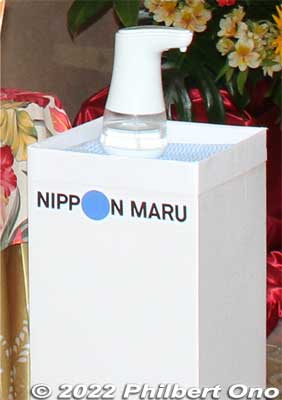
If any crew member or passenger notices any COVID-19 symptoms, the person and any close contacts must report it and be tested and isolated on the ship. If the test result is positive, the person and known close contacts are to remain in isolation until they can disembark at the next port. The ship will contact health and local authorities to coordinate suitable measures, transportation home, etc.
If there are multiple isolated cases of five or more infected people, the rest of the cruise and all ship activities are to be canceled. Ship facilities will also be closed.
Passengers will be confined to their cabins with food delivered to them until the ship reaches the final port for disembarkation. Passengers will receive a partial refund for the canceled cruise days.
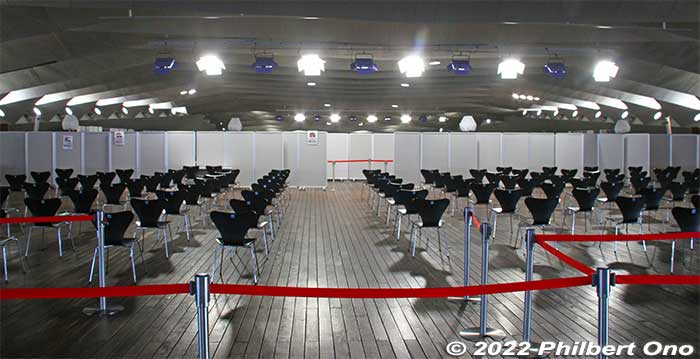
Video of Asuka II’s COVID-19 safety measures (as of Oct. 2021): https://youtu.be/lsp_nxAVTeo
Video of Nippon Maru’s COVID-19 safety measures (as of April 2022): https://youtu.be/1rWNlABlTEU
Video Pacific Venus’s COVID-19 safety measures (as of Jan. 2021): https://youtu.be/LE8NfDtwqvk
❗️Basic cruise rules in Japan (as of mid-2022)
They include the following:
- When boarding, the security check may include a metal detector. If you have a pacemaker, etc., inform the security staff beforehand.
- Knives and other dangerous items are not allowed on the ship.
- Cannabis/marijuana is illegal in Japan.
- Wheelchair users must be accompanied by an able-bodied helper.
- Electric (motorized) wheelchairs must be turned OFF on the ship. It must be switched to manual mode.
- Pets are not allowed on board.
- After boarding the ship, all passengers are required to join the emergency muster station drill and learn how to wear a lifejacket and know the location of lifeboats.
- No smoking or vaping anywhere on the ship (including passenger cabins and on the balcony) except in the smoker’s lounge/room.
- Legal age for alcohol consumption and smoking in Japan is age 20 and above.
- If you have any symptoms of COVID-19 or other infectious disease, report it immediately.
- Follow all COVID-19 safety protocols.
- Do not throw any trash into the ocean from the deck or balcony. It is against the law.
- Follow the ship’s dress code (especially for dinner).
- No need to tip the ship’s crew or staff.
- Before swimming in the pool, wash off any suntan oil from your body.
- Before entering the large communal bath, rinse or wash yourself. Rinse off any soap on your body. Do not bring any towels or clothing into the bath. Do not wash your clothes or dye your hair in or around the communal bath.
- Avoid loud talking and making noise while walking through the passenger cabin hallways.
- In your cabin, your TV volume should not be set too high. Avoid playing any musical instrument or making any other loud noise. Avoid door slamming when closing the door.
- Do not go outside your cabin in pajamas or underwear. Room slippers are to be worn only inside your cabin.
- When using the laundromat, take out your laundry promptly after it is done. Do not wash or dry any sneakers or shoes in the laundromat unless it is designed for sneakers. The ship cannot be held liable for any lost laundry items.
- If you use the ship’s medical clinic, health insurance will not be accepted. You must pay the full amount for medical services.
- Credit card payments are accepted until the day before you disembark the ship. Cash-only payment is usually required on the day you disembark.
- While at port, you cannot bring anyone on board who is not a cruise passenger.
- There are CCTV security cameras everywhere. Don’t do anything bad.
- Do not fall or jump overboard.
🆘 Safety record of Japanese cruise ships
The safety record of Japanese cruise ships currently in service has been excellent so far, meaning that there has been no fatal accidents (excluding suicides), no capsizing, no sinking, no running aground, and no fuel spills.
No COVID-19 clusters or outbreaks either (only isolated cases). Violent crime against passengers on Japanese cruise ships is almost unheard of (not too many places to run or hide on board). No pirates or hijackers either.
However, there have been a few safety-related mishaps on all three ships. Here are the most notable ones:
🛳 Asuka II safety record
March–May 2022: The ship had problems with a power transformer and had to cancel all its cruises from late March to late May 2022. The power transformer was custom-made by an overseas manufacturer, so it took time to get a replacement and test its operaton and safety after the replacement.
June 16, 2020: While the ship was docked at Yokohama Port’s Osanbashi Pier for refurbishing, a fire broke out in a storage room on the top deck. It took several hours to extinguish. The fire was likely caused by welding work on a nearby metallic floor whose intense heat traveled to the metallic wall of the storage room where it became hot enough to ignite some rolls of cloth or upholstery materials touching the wall. There were 153 crew on board and no passengers. Nobody was hurt. The fire was widely reported in the news.
Asuka II dutifully posted bulletins and updates on its website about the fire. Good that they were being honest and transparent.
October 7, 1990: During Asuka II’s voyage as Bahamas-registered Crystal Harmony from San Juan, Puerto Rico to Acapulco, Mexico via the Panama Canal, a fuel leak in the auxiliary engine room caused a fire in the engine room and a storage room. It was extinguished within an hour. No injuries and no damage to passenger decks, but it disabled the propulsion system and caused the ship to drift for 16 hours. There was power for lights, but not for air conditioning.
After makeshift repairs, the ship managed to reach port at Colon, Panama to disembark all 920 passengers who flew back to the U.S. and received a full refund plus $500 credit for a future cruise. The ship was repaired in Curacao in the Caribbean.
More about the Asuka II here.
🛳 Nippon Maru safety record
Dec. 30, 2018: Nippon Maru cruise ship made national news headlines in Japan and Guam when it smashed into a dock in Guam’s Apra Harbor and the stern got a large hole. The ship was leaving the harbor for Saipan. It was backing out to pivot 180˚ in the harbor basin when the captain pushed the lever the wrong way (in reverse) and the ship’s rear slammed into the US Navy’s mooring dolphins behind it. The Japanese captain was drunk.
The ship’s stern got a large hole and gash. Fortunately, the hole was above the water line and no water gushed in. There were no injuries and no fuel spills. The ship returned to the dock and canceled the cruise.
Nippon Maru was sailing to Saipan on its New Year’s Guam and Saipan Cruise (Dec. 26, 2018–Jan. 4, 2019) from Yokohama with 372 Japanese passengers and 252 crew members. They had to disembark on Guam and fly back to Japan.
Makeshift repairs were done on Guam to cover the hole, then the ship left Guam on Jan. 11, 2019 and was towed to Japan for full repairs.
This accident was also caused by miscommunication between the captain and other officers maneuvering the ship. The Japanese captain, in his 50s, was suspended for drinking alcohol on the job. His name was never disclosed and it is not known if he ever commanded a ship again.
Nippon Maru was fully repaired on Jan. 26, 2019 and returned to service the next day.
News articles about the accident:
Pacific Daily News: Alcohol blamed in Apra Harbor Nippon Maru cruise ship accident
Forbes: What A Drunken Captain On Mitsui OSK’s Nippon Maru Means For The Mauritius Wakashio Enquiry
Seatrade Cruise News: Master’s alcohol impairment figured in Nippon Maru’s Guam accident
National Transportation Safety Board: Nippon Maru Guam accident report (PDF)
More about the Nippon Maru here.
🛳 Pacific Venus safety record
March 4, 2016: While cruising out of Tokyo Bay northeast of Tsurugisaki Lighthouse on the tip of Miura Peninsula, Pacific Venus had a fire in the engine room. A 30-year-old Filipino engine crewman got badly burned, and the left engine’s exhaust pipe got scorched. The Filipino crewman was painting the engine room near the left engine’s exhaust pipe without knowing it was dangerous.
A can of paint fell over and the paint spilled on the left engine’s hot exhaust pipe below. The high heat ignited the fire, and the Filipino crewman’s left foot caught fire. Nearby engine crew managed to extinguish the fire within several minutes. The ship went to Keihin Port under its own power, and the injured Filipino crewman was taken to the ship’s clinic and later hospitalized for a week to treat second- and third-degree burns. No injuries to the 202 crew members and 78 passengers.
More about the Pacific Venus here.
Japanese Cruise Ship FAQ
How much does a cruise in Japan cost?
As of mid-2022, Japanese cruise ships charge around ¥45,000 to ¥60,000 per night (per person for two in a twin-bed cabin). The longer the cruise, the cheaper it is per night. One-night cruises cost around ¥50,000 without any port of call. (You only depart and arrive back at the same port after one night.) Two-night cruises go for around ¥55,000 per night. Six-night cruise with two ports of call can cost ¥280,000 (¥47,000/night).
Then there are special cruises with concerts by big name singers. Asuka II’s two-night Christmas 2022 cruise featuring singer Kayama Yuzo (for the last time before he retires) costs almost ¥200,000 for the cheapest cabin. Singer Ishikawa Sayuri’s two-night concert cruise on Asuka II in Nov. 2022 is ¥153,000 for the cheapest cabin.
Infants younger than age 2 can usually cruise for free, but with no food served. Children from age 2 to elementary school age will pay 75% of the adult fare. Junior high school and older kids are to pay the full adult fare.
International cruise ships are generally cheaper than Japanese cruise ships especially if they have inside rooms with no windows. Passenger cabins in Japanese cruise ships all have windows, so they are more expensive.
How to make Japanese cruise ship reservations?
First of all, to make reservations, you must be a resident of Japan. Then if you can read Japanese, you can make reservations online on the cruise ship’s official website. Or go to a travel agent in Japan.
What to bring on a Japan cruise?
You should bring whatever you would bring on any normal trip on land. Japanese cruise ships maintain a comfortable, uniform temperature (25˚C or 77˚F) throughout interior spaces. You need to consider Japan’s current climate and season and warmer clothing if you will visit northern Japan.
Here’s a basic list of things to bring on a Japan cruise:
- If you’re cruising north (Tohoku or Hokkaido), bring warmer clothing.
- Collapsible or compact umbrella. Rain is always possible.
- If you take any medications, bring an extra supply.
- Check the ship’s dress code for dinner (semi-formal or formal).
- Small power strip to power or recharge your phone, laptop, camera battery, etc., at the same time.
Do not bring:
- Anything not allowed on airplanes: Knives, firecrackers, etc.
- Do not pack too many things.
- Live pets.
Do Japanese cruise ships offer public tours?
Until 2019, all three Japanese cruise ships held public tours at various Japanese ports. However, I currently cannot find any information about upcoming public tours. Too bad. https://www.jopa.or.jp/public/public.html
A few years ago, Nippon Maru offered the public a three-hour luncheon on the ship while at port (no cruising). For ¥12,800, guests had a delicious lunch in the main dining room, toured the ship, played bingo and won prizes, and saw the house band perform live in the event hall. They all enjoyed it. Hopefully, all three ships will offer public tours again at port.
Nippon Maru tour: https://youtu.be/XFWavscRjIQ
What’s it like to work on a Japanese cruise ship?
Like on any cruise ship in the world, it’s quite demanding work and the hours can be long (goes by quickly though). Depending on your job, you can be on your feet for hours. Japanese language ability may also be required for certain jobs.
If you’re a foreigner (other than Filipino), it would be better to work on an international cruise ship instead. The work environment and passengers are much more international. Japanese cruise ships mainly employ only Japanese and Filipinos, and almost all passengers are Japanese. You won’t be speaking English much.
If you want to work in Japan, look for international cruise ships planning to operate in Japan after the country reopens.
If you’re Filipino, you can apply for a Japanese cruise ship job through employment agencies specializing in cruise ship jobs for Filipinos. Japanese cruise ships also have a staff/crew recruitment web page which lists available jobs.
All Japanese and foreign crew (mainly Filipino) are very nice and courteous to everyone. All crew members have been well vetted through interviews, etc., so they are all nice and competent.
Since Japanese cruise ships are smaller, you see other crew members more often and they will become familiar faces or even friends.
Here are some of the pros and cons of working on a Japanese cruise ship. Most also apply to any cruise ship in the world.
Pros
- Travel around Japan for free. The company will also pay for your travel expenses between your home and the ship when you start and end your job contract.
- Go ashore and tour the ship’s ports of call in Japan. Best time to do this is in-between cruises when the ship is in port, after passengers disembark and before passengers for the next cruise board. There usually isn’t much free time though, only a few hours. During a pandemic, you want to avoid crowds ashore to reduce the chances of bringing an infectious disease aboard.
- Japan has more variety in destinations/ports, touring options, different seasons, and festivals/events. An international cruise ship usually cruises only in the same region every time. Crew members may soon get tired of seeing the same ports of call repeatedly.
However, Japanese cruise ships cruise all over Japan and sometimes overseas (when permitted). I think it would take at least 2 or 3 years of cruising to get bored of Japanese ports of call. Even if you visit a Japanese port multiple times, it will look different at different times of the year. Japan has much variety. - Free meals. You won’t eat the same gourmet food as the passengers, but the food in the crew’s mess hall is pretty good. Well-balanced and nutritious meals with vegetables, rice, soup, protein such as meat or fish, and sometimes dessert. Filipinos may have their own food/menu. You need to be well fed and healthy to work well every day. You don’t need to cook, wash dishes, etc. (unless you’re a galley crew member). No need to buy groceries either. A real time and money saver.
- Free accommodations. You live on the ship. You will usually have a roommate though. This may be problematic during a pandemic. On Asuka II, after isolated COVID-19 cases kept occurring during July–August 2022, they gave all crew members single rooms.
- No need to commute to work by train, bus, etc. Just walk to work. Another time saver.
- It’s very unlikely that a Japanese cruise line will go bankrupt even when it’s not making money. They are backed by major maritime transport companies and the cruise ship is a symbol of prestige and PR tool. It’s like the company or corporate group’s flagship. The flower in the vegetable garden. The red cherry on the ice cream sundae. No one pays attention to tankers and container ships. Only cruise ships (and maybe ferries) are attention grabbers. Similar to Japanese companies who own a pro baseball team. It’s good PR for the company.
- Since Japanese cruise lines operate only one ship each and it’s not a mega-ship, they have an easier time recruiting the necessary number of crew and staff.
- Since many crew members and all passengers are Japanese, your Japanese language ability might improve.
Cons
- Japanese cruise ships do not have many nationalities. Crew/staff members are mostly Japanese and Filipino only. Passengers are all Japanese. So it’s not very international and not a place to meet people from around world like on international cruise ships which employ many different nationalities.
- You don’t have the opportunity to work on a different cruise ship in the same fleet. Japanese cruise lines currently operate only one ship each. There’s no fleet of ships. If you want to work on a different ship, you have to work for a different cruise company.
- COVID-19 protocols are stricter on board than on land. You may be required to wear double masks, get PCR tested once a week or so, and report any coughing, headaches, etc., even when it’s only a cold. Activities like karaoke, playing cards, and ballroom/disco dancing might not be allowed.
- Just living and working on a ship means there are rules to follow. No cooking/fire in your cabin, etc. COVID-19 adds another layer of rules. In the beginning, you might make a few mistakes or unknowingly break a few rules because you didn’t know, you forgot, you weren’t trained for it, or you weren’t told about it.
- Due to the pandemic, crew members cannot be as social as before. Talking during meals in the crew’s mess hall is usually prohibited. This is a major loss of opportunity to get to know your fellow crew members and understand each other for work. The captain may not mingle with guests either.
- COVID-19 continues to pose a certain risk on cruise ships. If someone tests positive for COVID-19, the cruise might be canceled and passengers might be confined to their cabins. If you’re the one who got infected and caused the cruise to be canceled, it will make you feel worse.
- There’s a certain level of uncertainty day after day. Cruise ships are at the mercy of government regulations (for cruising overseas), COVID-19, and the weather ( typhoon season). Cruises can always be canceled which can disappoint customers. Customers should always have a Plan B in case a planned cruise is canceled.
- Workplace and home are the same. Although there’s no commuting time, you’re on call 24/7 especially when there are passengers aboard. So there’s a certain level of tension and stress.
- Unless you have own cabin, there’s not much privacy on board. You’re always with people and you’re always being watched or monitored by people or CCTV cameras. Cabin beds have their own individual curtains, so it is possible to hide yourself from your roommate. But as soon as you step out of your cabin, it’s your workplace and you must dress (no pajamas, etc.) and act (no drunkenness, etc.) properly especially when passengers are on board.
- Unless you’re an officer or manager, your pay is likely not so much. But you do receive free lodging, meals, laundromat, etc.
- Japanese cruise ships are operating in the red. It’s not a good feeling that your employer is not making money.
- You will miss things (and people) on land. At sea, you can’t just go to your favorite shopping mall, restaurant, friend’s house, or take a walk in the park.
- No weekends off. Since weekends are prime time for cruises, you will be working. Unless the ship is in drydock or laying idle in port due to COVID-19 cases on board, you won’t have a full day off.
- Cruise ship jobs are relatively short-term. Although there are people who prefer working at sea and do it for years, for most people, it’s not a long-term career. For example, if you want to raise a family, you will need to do it on land. You could remain at sea and be away from your spouse who is to raise your child on land. But it’s tough for only one parent to raise a child unless grandparents are also there to help. Best to have both parents on land for any child.
- Cruise ship occupations remain in obscurity. Compared to other travel jobs like at airlines, airports, hotels, tour guides, and travel agents, cruise ship jobs are not something most people even consider. It doesn’t come to mind at all (unless you’re Filipino). Ask a child what he/she wants to be when he/she grows up. He/she would never say “I wanna work on a cruise ship.” However, once a person hears about it, he/she usually gets interested and may look into it.
Cruise ship jobs are not for everyone. It’s a good experience though.
What about cruising on Japanese ferries?
Japan also has long-distance, overnight ferries (長距離フェリー). They have private cabins in multiple classes, restaurant, communal baths, lounge, and gift shop. They are much cheaper than cruise ships and the cabins are clean and adequate.
Overnight ferries give you the same experience of being at sea, but without the gourmet cuisine, amusement, and entertainment found on cruise ships. Onboard restaurant food is also affordable because the ferries are patronized by budget travelers. Out of hundreds of ferry operators in Japan, I counted 14 long-distance ferry lines. They also transport vehicles.
Japan’s longest ferry route is operated by Taiheiyo Ferry between Nagoya (Aichi Prefecture) and Tomakomai Port (Hokkaido), taking 40 hours (2 nights and 3 days) including a stop at Sendai Port. Another long ferry cruise is between Tokyo and Kita-Kyushu Port, taking 34 hours (2 nights and 3 days) with a stop in Tokushima. Another famous long-distance passenger cruise is from Tokyo to the Ogasawara islands down south, taking 24 hours on the Ogasawara Maru.
How to keep up with Japanese cruise news?
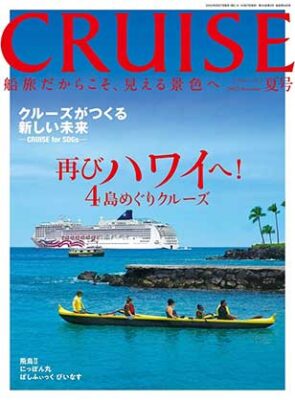 Unless something bad happens, cruise news won’t make mainstream news. So you need to read cruise industry news websites and publications to keep up with the latest.
Unless something bad happens, cruise news won’t make mainstream news. So you need to read cruise industry news websites and publications to keep up with the latest.
In English, there’s little information on Japanese cruise ships and cruising in Japan. Even the official websites of Japanese cruise ships are in Japanese only.
Leading cruise industry news magazines in English like Seatrade Cruise Review cover major developments in Japan’s cruise industry. I found a few articles about Japanese cruise ships as well.
https://www.seatrade-cruise.com/tags/japan
However. for more news and updates, you need to read Japanese sources. For upcoming cruises (and canceled cruises), see the official websites of Japanese cruise lines.
For cruise ship reviews, there are many online cruise magazines, blogs, and Youtube videos created by Japanese cruisers and travel agents.
CRUISE magazine (photo) is a leading Japanese cruise magazine in print and online. I’ve never seen it in bookstores though. It even keeps track of all COVID-19 cases occurring on Japanese cruise ships.
https://www.cruise-mag.com/news/
Japanese tourist news outlet Travel Voice mainly for industry people also includes cruise news and industry trends and developments:
https://www.travelvoice.jp/news/cruise
Next: More about Asuka II or Pacific Venus or Nippon Maru
Content Navigator
Japanese Cruise Ships (Current page)
- Ship comparison
- Japanese cruise ship advantages
- COVID-19 protocols
- Basic cruise rules
- Safety record
- FAQ
- Asuka II
- Nippon Maru
- Pacific Venus
Ports for Cruise Ships in Japan
- Cruise ship departure ports
- Japan’s popular ports of call
- Shore excursions
- Mega-ships and harbor bridges
- Japanese port history
- Port town songs
- Major Japanese Ports: Yokohama | Tokyo | Kobe | Hakodate | Nagoya | Kanazawa | Toyama
State of Japanese Cruise Industry in mid-2022
- COVID-19 not over yet
- International cruise ships in Japan
- Japan still closed to international cruising
- Essential Japanese Vocabulary

